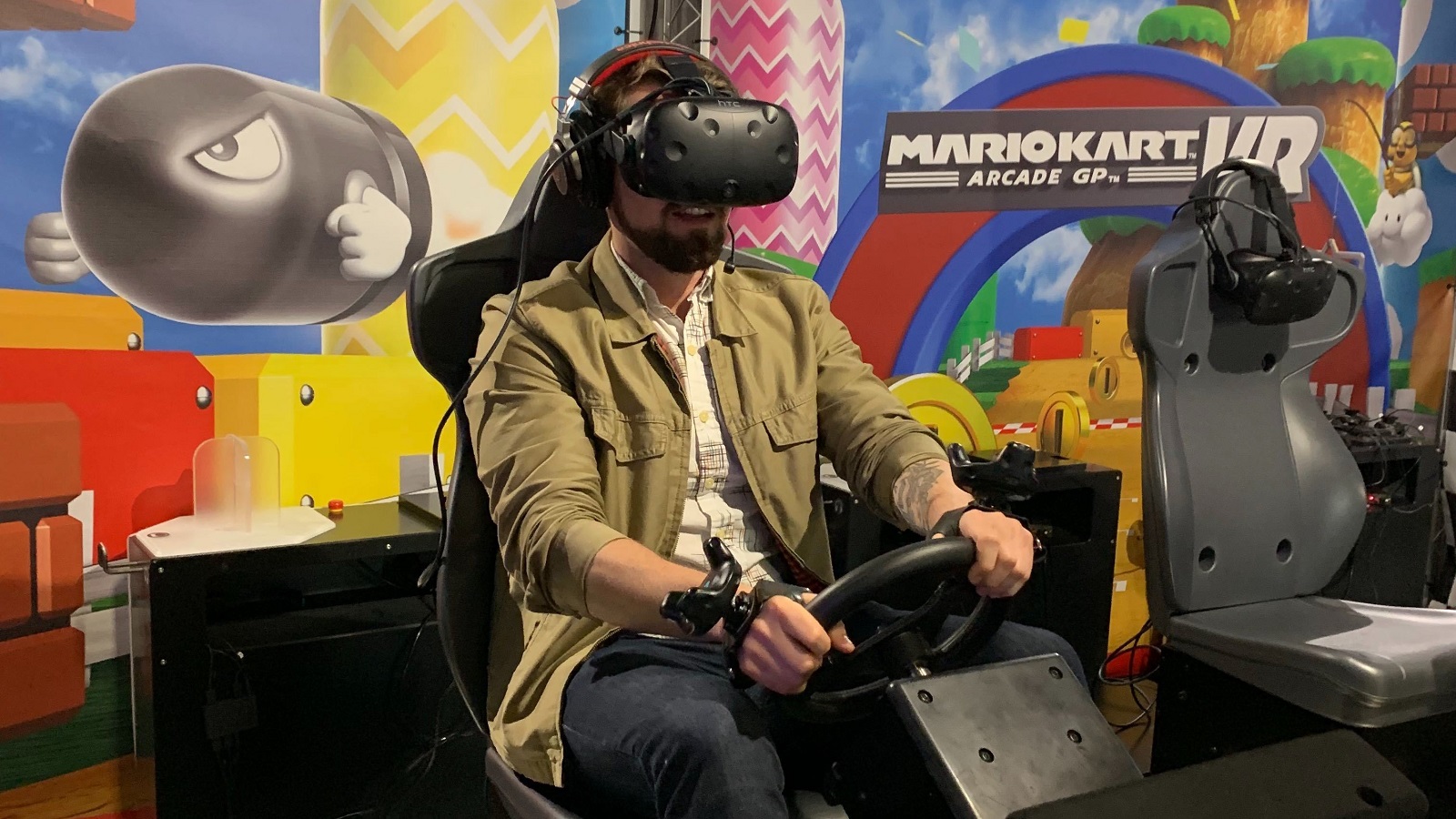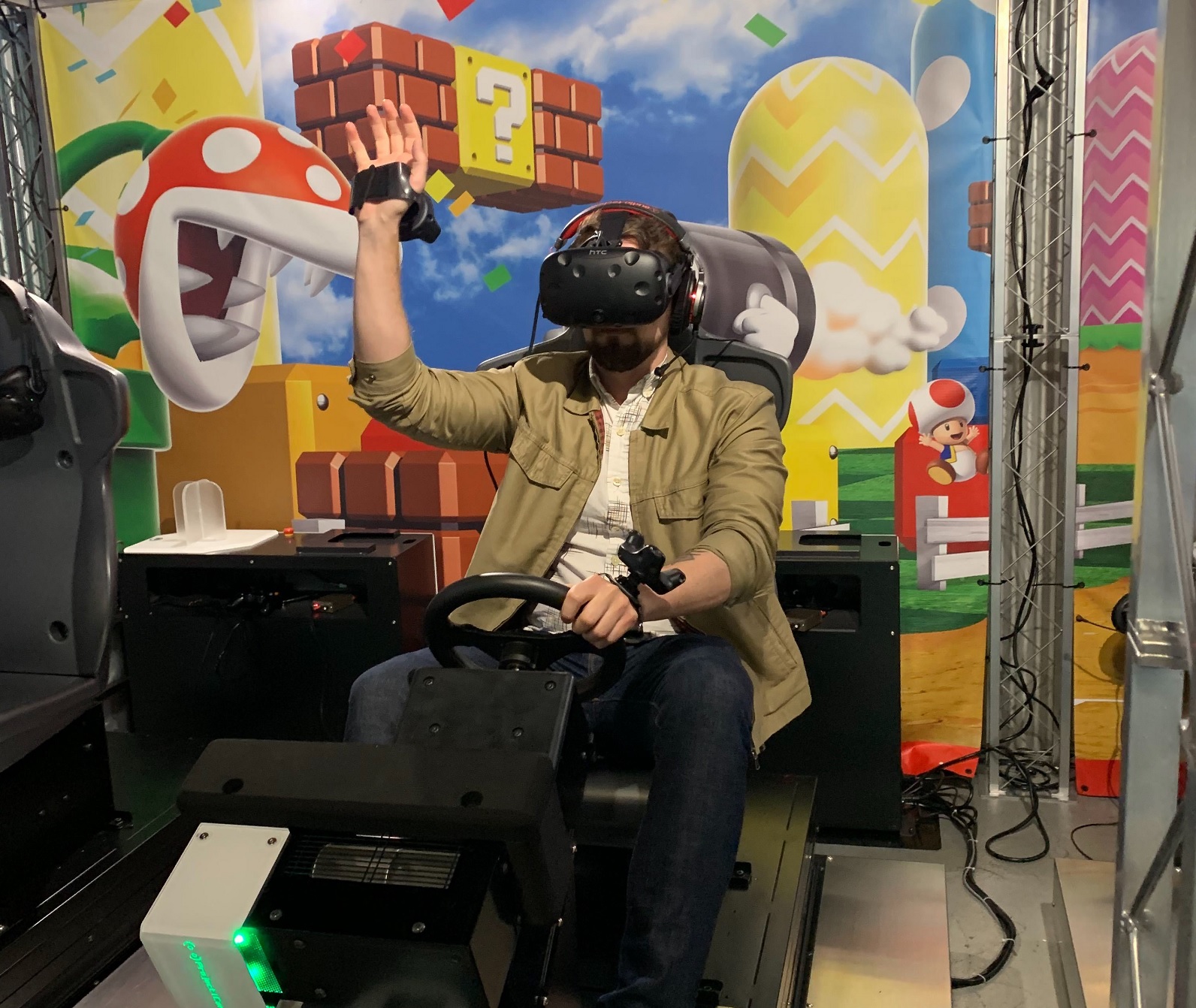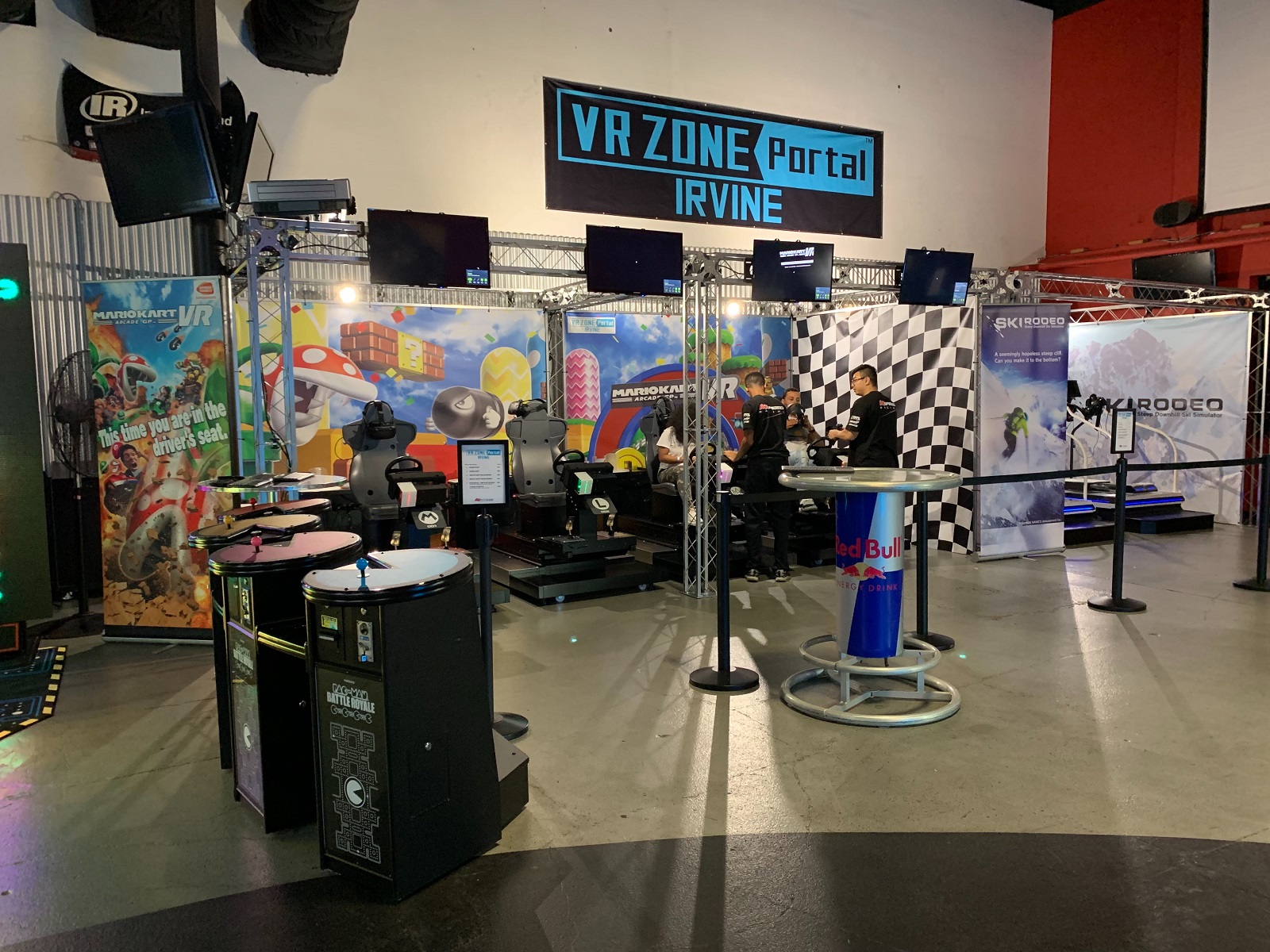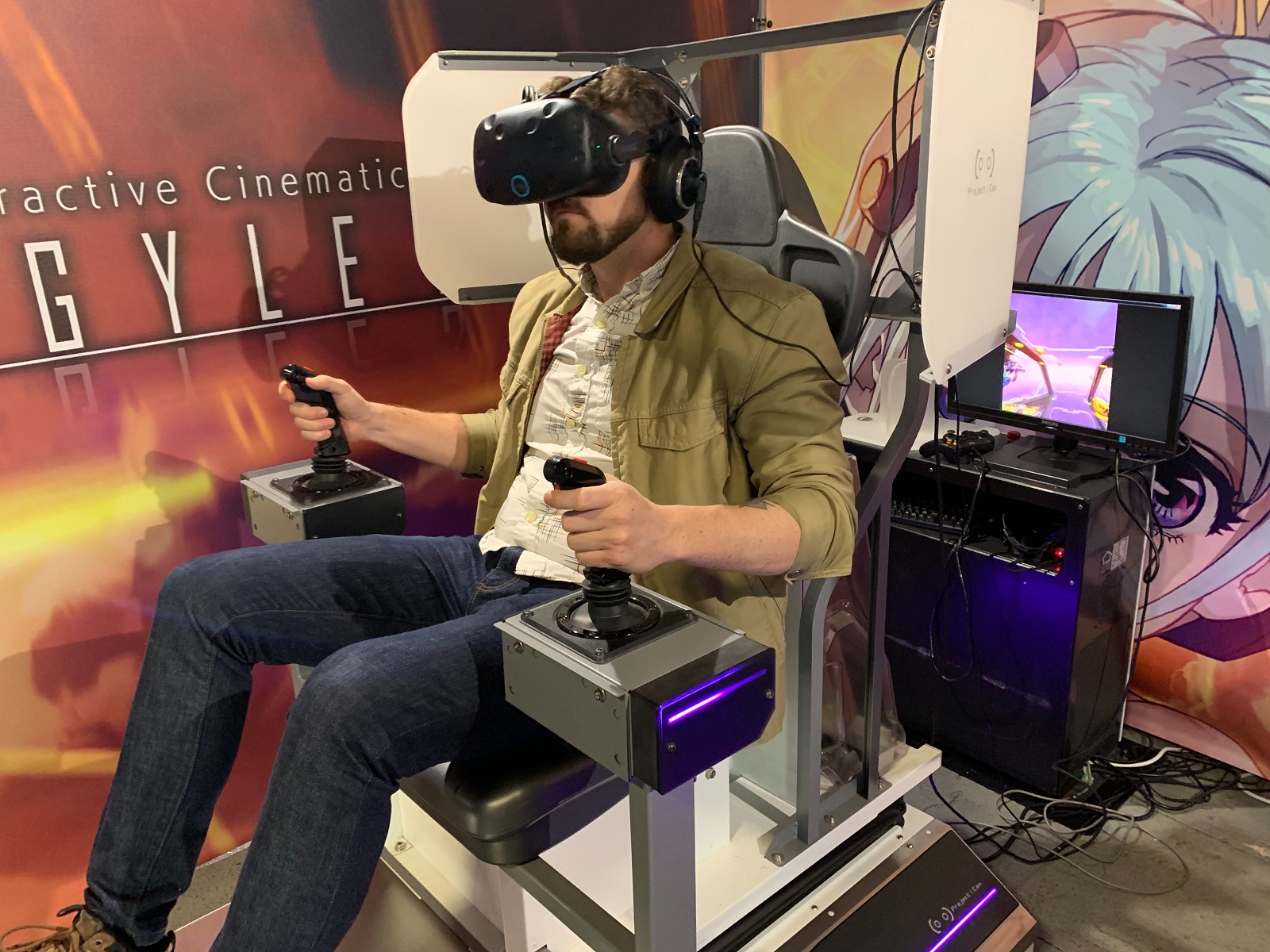Mario Kart VR is like racing on mushrooms
The experience is live in Southern California

Bandai Namco’s Mario Kart Arcade GP in virtual reality is simple: drive around tracks from the game series and feel every bump, green shell and ‘Waaaaaaaugh!’ in immersive VR and a rumble seat. The game started a worldwide tour a couple years ago in Japan, and its latest stop is in sunny Southern California.
I pulled in to an industrial park in Irvine, California at a branch of K1 Speed go karting. Enter, go past the IRL track, and you’ll find an arcade where space has been cleared for a trio of VR game installations. That’s where I got a taste of Mario Kart VR.
Up to four can jump into a single race, and each station is a different character (Mario, Luigi, Peach, etc). Players sit in a racing chair just like any racing game, don an HTC Vive headset and headphones, and slip each hand through a rubber wristband with a Vive Tracker sensor on top.
And then, without further ado, the race is on.
Zooming around the Mushroom Kingdom
You’ll have a few seconds to take in the Mushroom Kingdom cheering on the racers before Bowser and Wario rudely screech ahead of you for a better position at the starting line. The cloud-hovering Lakitu drops with a stoplight to count down, and on green, you jam the gas.
From there, the race is very much a simplified Mario Kart. There are items hanging from balloons that you literally hold your hand out to grab, then wave your hand forward to toss at competitors ahead. The arsenal is small but useful, with green shells, bananas and a hammer you can use to smack racers beside you.

And if you’re smacked, you’ll feel it: the chair rumbles and tilts slightly yet precisely, giving the feel of leaning into turns.
Get daily insight, inspiration and deals in your inbox
Sign up for breaking news, reviews, opinion, top tech deals, and more.
Soon, the track disappeared into a white light...which transports racers to a different level from the Mario Kart series, making it clear I was cruising through a sampler platter of the franchise.
By now, I noticed that my top speed couldn’t quite catch up to Bowser (always Bowser…) and the others in the lead, which seemed intentional: the computer-controlled racers got eaten by massive piranha plants or hit by thwomp blocks - or even just messed with each other. It helps the race feel populated since you can’t look past either shoulder.
By the finish line, items be damned, I couldn’t get ahead of the scrum - and perhaps it wasn’t possible to do so, as I wasn’t shown what place I ‘finished’ in. But I’d probably have minded much less if I’d brought another friend or three to race against.
True, it was over pretty quickly for the $10-per-race entry fee, but it delivered on the premise: immersive Mario Kart with good arcade VR tech. Hitting buttons doesn't hold a candle to physically (transitively?) hurling a green shell and watching it bring down a racer ahead of you.

Good news, bad news
The bad news first: you’ll probably wait awhile for Mario Kart VR to move on to a new location closer to you in the US or elsewhere. It started in Tokyo, then moved on to London and was temporarily in Washington, DC before pulling up stakes to set up in Irvine, California.
It's unclear if it will remain in Irvine if and when a new VR Zone opens elsewhere.
Why wouldn't it? Because these setups are expensive: I was told by the Irvine K1 Speed manager (they operate the booth, which is set up and serviced monthly by a different company) that each seat costs around $40,000 apiece. That’s eight seats for the three games on display.
Plus, they don’t always make enough money to stick around. The Irvine K1 Speed previously tried out a different VR zone in its arcade, which lasted a year before it was carted away for not making enough money to justify its space.
The good news is that the Mario Kart VR (and other games) drew in more cash on its opening Saturday than the previous VR games did in a month. Whether news articles or Instagram posts, people are hearing about it and coming to race. (Folks have also been drifting over from the actual track and playing on the digital one, too.)
At the earliest, Mario Kart VR will be around until August, though the manager suggested it might last a full year. Sometime in between, Bandai Namco Amusement may add more tracks to Mario Kart, as well as additional content to the other two VR games.

And if you’re at Irvine K1 Speed, you might as well try out the other two games (I did). I’d never skied before and was appropriately awful at Ski Rodeo, though it was a gorgeous game with an IRL fan angled at your face to simulate the chill mountain air. The swinging footpads let you slalom and angle your digital skis, (presumably) just like one does when on the actual slopes.

The third game, Argyle Shift, is audacious: climb into a mech and use your twin sticks (with head-guided aiming) to gun down enemies. Regrettably, the game is short and restrictive - it’s essentially a rail shooter - and feels more like an impressive tech demo than a full experience. We’d be remiss not to mention the ridiculous anime-skimpy outfit your obsequious AI is wearing, so...woof. But more episodes should be coming to continue the story.
(And for patient friends who aren’t into VR, there’s a mega-Pac-Man station right alongside the VR that’s far cheaper per play.)
In summary: come for the Mario Kart VR, try other experiences, and if you feel confident after dusting your friends in the Mushroom Kingdom, there’s another (real) track to see if your racing skills transfer over to meatspace.
- Want to take virtual reality home? Peruse our list of the best VR headsets
David is now a mobile reporter at Cnet. Formerly Mobile Editor, US for TechRadar, he covered phones, tablets, and wearables. He still thinks the iPhone 4 is the best-looking smartphone ever made. He's most interested in technology, gaming and culture – and where they overlap and change our lives. His current beat explores how our on-the-go existence is affected by new gadgets, carrier coverage expansions, and corporate strategy shifts.
